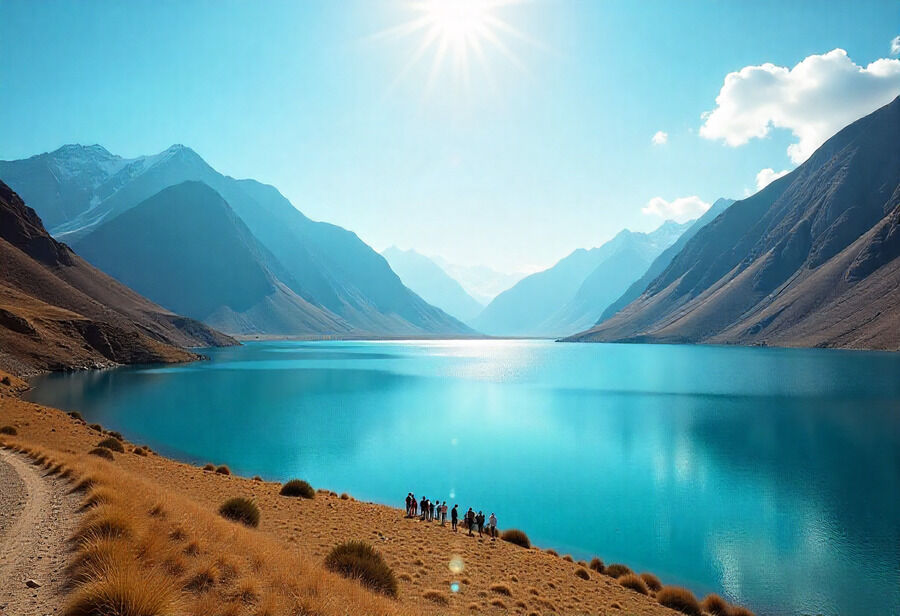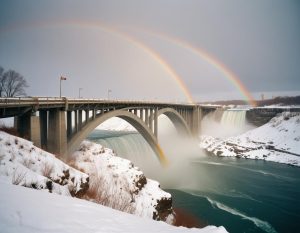Published on September 30, 2025
India tourism industry is currently grappling with a major setback in Ladakh, as violent protests, an indefinite curfew, and ongoing unrest have led to widespread cancellations and stranded tourists. This crisis, which erupted after clashes between protesters and security forces on September 24, 2025, has severely disrupted the region’s thriving tourism sector. Once a popular destination known for its stunning landscapes and unique culture, Ladakh now faces a dire situation as political agitation, a communications blackout, and safety concerns have left travelers uncertain and local businesses on the brink of collapse.
Ladakh, one of India’s most captivating and sought-after tourist destinations, is currently grappling with an unprecedented crisis. Once known for its breathtaking landscapes, serene monasteries, and adventure tourism, the region is now at the center of an ongoing political and social unrest that has shaken its tourism industry to its core.
Advertisement
Advertisement
Recent developments, including violent protests, an indefinite curfew, and severe restrictions, have led to widespread cancellations of bookings, leaving countless tourists stranded and causing significant financial losses for local businesses dependent on tourism. The turmoil has not only disrupted the daily life of Ladakhis but also left a lasting impact on one of the region’s most important economic sectors.
The Spark of Unrest: Protests and Political Agitations
The unrest in Ladakh escalated on September 24, 2025, when violent protests broke out during a shutdown called by a constituent of the Leh Apex Body (LAB). The Leh Apex Body is a group of political leaders, activists, and organizations that have been agitating for statehood for Ladakh and the extension of the Sixth Schedule of the Indian Constitution to the region. These demands stem from years of feeling marginalized by the central government, particularly in terms of economic development and political autonomy.
Advertisement
Advertisement
The protests on September 24 quickly turned violent, leading to clashes with security forces. The demonstrations, initially peaceful, spiraled into chaos, resulting in the deaths of at least four individuals and injuring over 150 others. As the violence intensified, the authorities imposed an indefinite curfew in Leh town, which continues to impact the region as of late September 2025.
The Indefinite Curfew: A Lockdown on Tourism
In response to the escalating violence, the authorities enforced a strict curfew starting on September 24, 2025. The curfew has been in place for over six days, severely restricting the movement of both locals and tourists.
Advertisement
Advertisement
For the tourism industry, this curfew has proven disastrous. The once bustling streets of Leh, which are typically filled with tourists from across the globe, have now fallen silent, with hotels and guesthouses facing cancellations in droves. Tourists who had already arrived in the region find themselves trapped, unable to leave due to the restrictions on transportation. The curfew has paralyzed the local economy, with many tourists now confined to their accommodations, unable to explore the region’s famed attractions.
A Devastating Blow to the Tourism Sector
Ladakh’s tourism industry has always been a major contributor to the region’s economy. The pristine beauty of the Nubra Valley, the stunning Pangong Lake, and the unique culture and spirituality of the region have long drawn tourists from around the world. However, the recent unrest has put a significant strain on this vital sector.
Mass Cancellations and Loss of Revenue
- Tourists Cancel Bookings: In the wake of the violence, numerous tourists have canceled their plans to visit Ladakh, citing safety concerns and the ongoing curfew. Travel agencies and tour operators have reported that bookings for the coming months have plummeted, leading to massive financial losses.
- Stranded Tourists: For those who had already arrived, the curfew has resulted in a difficult and often uncomfortable situation. Tourists are unable to leave their hotels or move around freely, creating a sense of uncertainty and frustration. Many have been left with limited options, as flights and other forms of transportation remain unavailable.
- Economic Impact on Local Businesses: Local businesses, including hotels, restaurants, tour operators, and souvenir shops, are experiencing a severe dip in revenue. Many small business owners are struggling to survive as tourism, the lifeblood of the region’s economy, has ground to a halt. Without visitors, these businesses face a dire future, with some even contemplating layoffs or shutting down temporarily.
Telecommunications and Mobility: Further Complications
In addition to the curfew, the region’s telecommunications infrastructure has also been severely impacted. As a part of the security measures during the unrest, the local government has suspended internet and mobile services in Leh. This has added another layer of complexity for both tourists and locals alike.
Communication Breakdown:
- Lack of Communication: Tourists who are stranded are unable to reach their families or get timely updates about the situation. The internet shutdown means that many visitors are disconnected from the outside world, further increasing their anxiety and frustration.
- Disrupted Travel Plans: The suspension of communication has also created logistical challenges. Tourists are unable to contact travel agents, book transportation, or get real-time information about flight cancellations or alternative travel options.
Political Context: The Demand for Statehood
The roots of the current unrest lie in a long-standing demand for greater autonomy for Ladakh. The Leh Apex Body (LAB), which organized the shutdown on September 24, has been at the forefront of the agitation for statehood. The group is also calling for the extension of the Sixth Schedule of the Indian Constitution to Ladakh, which would grant the region greater control over its land, resources, and local governance.
For years, the people of Ladakh have felt sidelined by the central government. Despite being a region of strategic importance, Ladakh has not seen the level of development it needs. Infrastructure projects, healthcare, education, and employment opportunities have lagged behind, leaving many locals frustrated and disillusioned.
In recent years, the region has also witnessed growing resentment against the influx of outsiders, particularly those who come to the region for short-term commercial purposes. The growing concerns about preserving Ladakh’s unique cultural identity have fueled the demands for greater political control.
A Tense Situation: Uncertainty Looms
As of now, the situation remains tense. The protests are showing no signs of slowing down, and the curfew remains in place. The authorities have not given a clear timeline for when the restrictions will be lifted. Meanwhile, tourism stakeholders, local businesses, and residents are left to cope with the ongoing crisis.
Calls for Dialogue:
- Leh Apex Body’s Stance: The Leh Apex Body has made it clear that they will not engage in discussions with the central government until normalcy is restored in Ladakh. They have demanded the immediate release of all detainees and the withdrawal of charges against those arrested during the protests.
- Regional Leaders Demand Solutions: Regional leaders have urged the government to address the concerns of the Ladakhi people by granting the region greater autonomy and implementing measures to boost its socio-economic development. The protests have shown that many locals are willing to fight for their rights, and the government will need to respond carefully to avoid further alienation.
A Long Road to Recovery
The road to recovery for Ladakh’s tourism sector will not be easy. In the short term, the curfew and political unrest are likely to continue to disrupt the region’s tourism industry. The longer the unrest lasts, the more difficult it will be for the industry to recover.
The tourism sector, once a major driver of Ladakh’s economy, now faces an uncertain future. The region will need to address the political unrest and implement measures to restore peace and stability. Until then, both locals and tourists will continue to suffer from the ongoing turmoil.
Ladakh’s tourism sector has been hit hard by the combination of violent protests, curfew restrictions, and political unrest. What was once a thriving and vibrant industry has now been brought to its knees, leaving both locals and tourists in a state of uncertainty.
As the region waits for a resolution to the crisis, the tourism industry, which relies heavily on both local and international visitors, will need to rebuild. The authorities must address the concerns of the people of Ladakh, while also ensuring that the region can safely return to its position as one of India’s top travel destinations.
The India tourism industry is facing a severe crisis in Ladakh due to violent protests, an indefinite curfew, and political unrest. These disruptions have led to widespread cancellations and stranded tourists, crippling the region’s vital tourism sector.
For now, the future of Ladakh’s tourism industry hangs in the balance, as the region continues to navigate through this turbulent chapter in its history.
Advertisement
Advertisement
Tags: India Tourism, Ladakh Unrest, tourism cancellations, Tourism Crisis, Travel News
I want to receive travel news and trade event update from Travel And Tour World. I have read Travel And Tour World’sPrivacy Notice.
Tuesday, September 30, 2025
Tuesday, September 30, 2025
Tuesday, September 30, 2025
Tuesday, September 30, 2025
Tuesday, September 30, 2025
Monday, September 29, 2025
Tuesday, September 30, 2025
Tuesday, September 30, 2025




